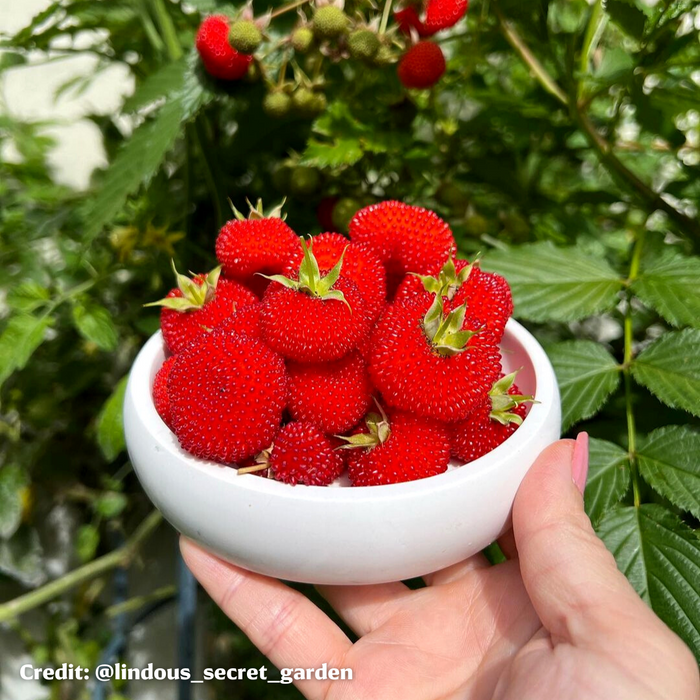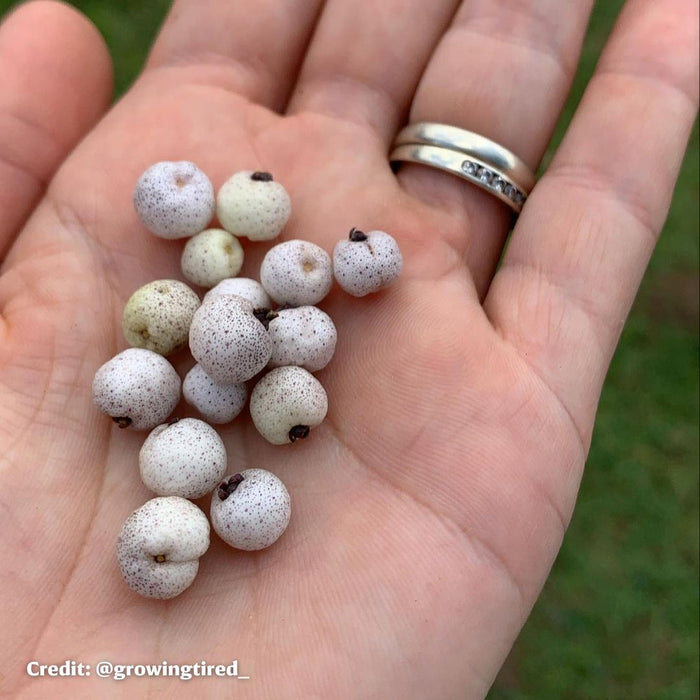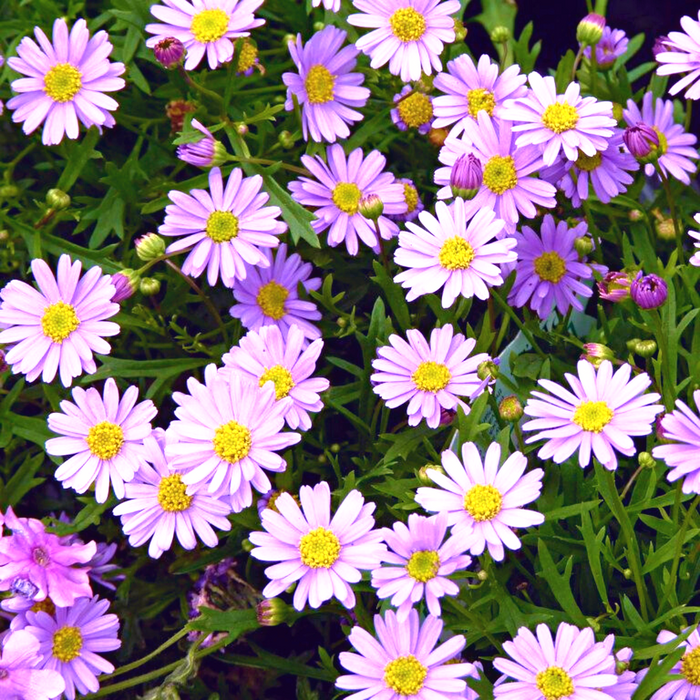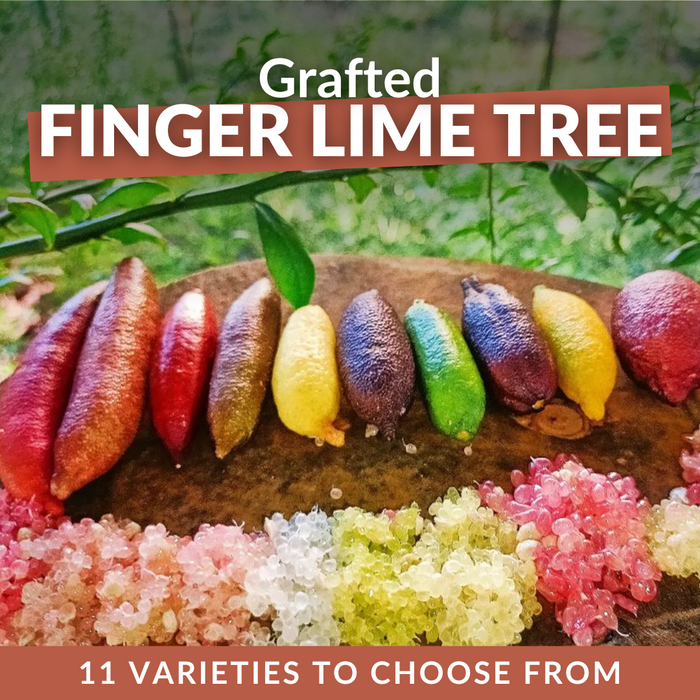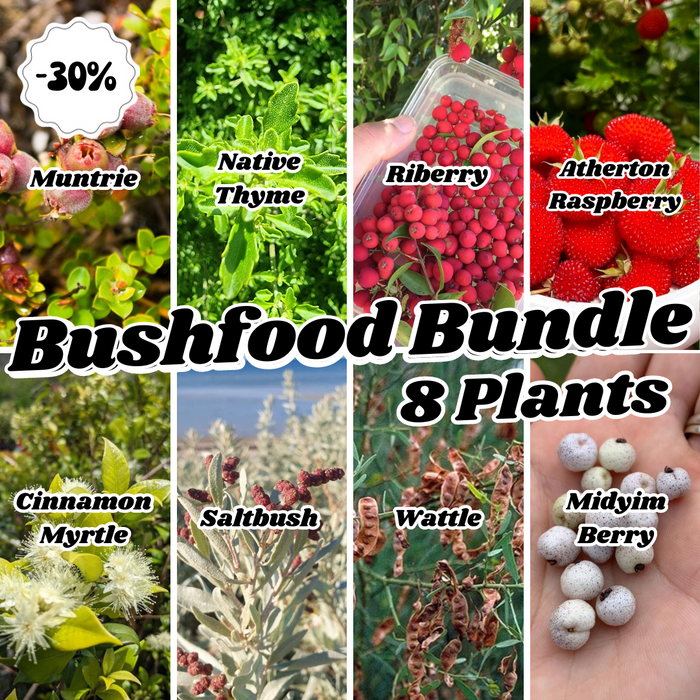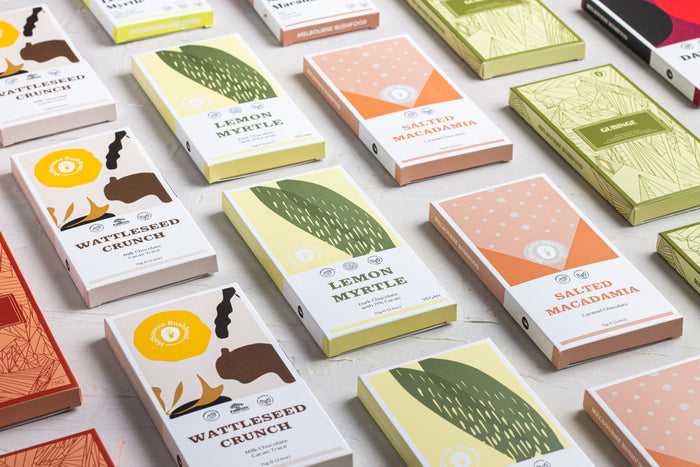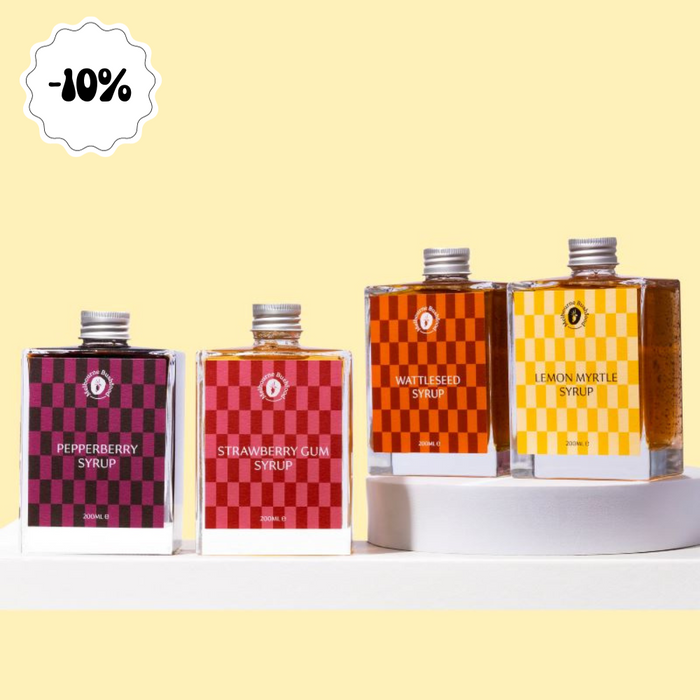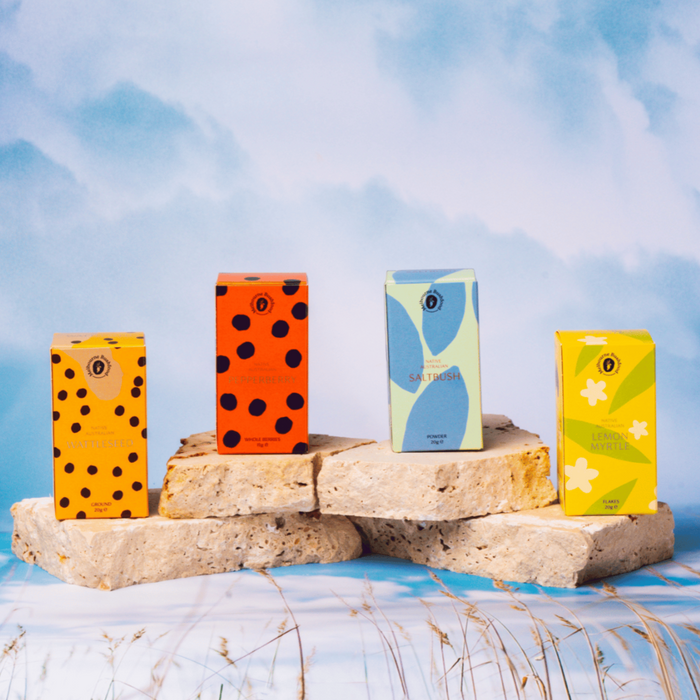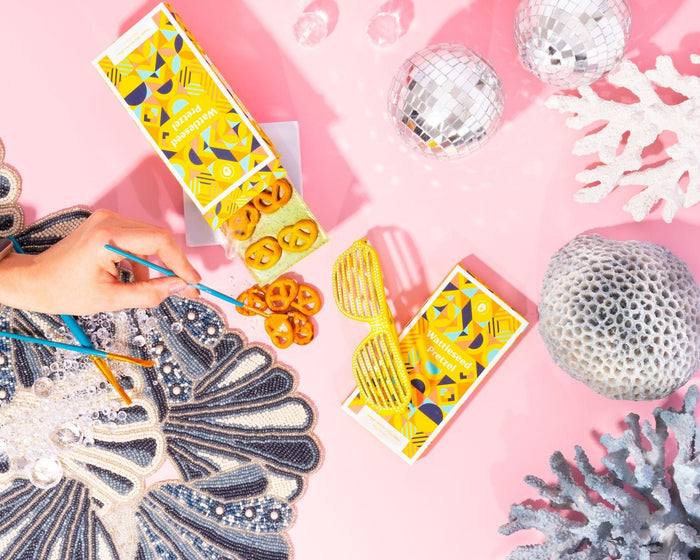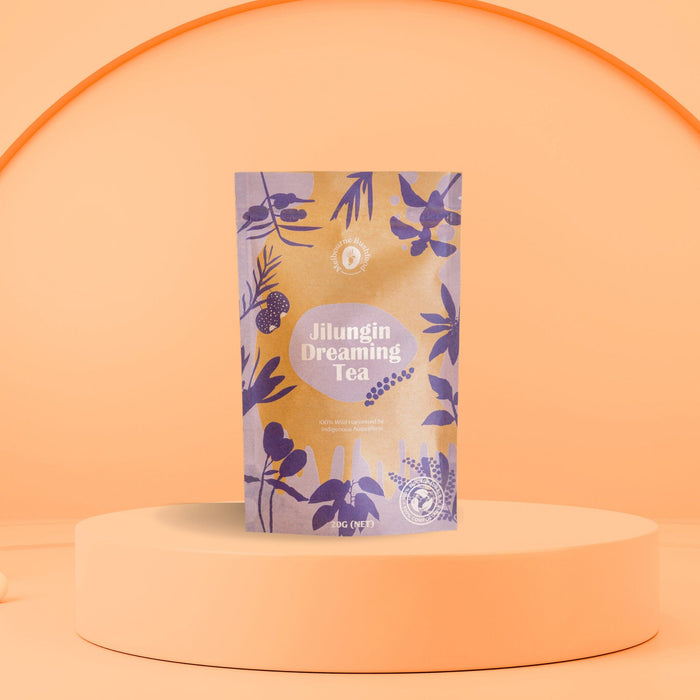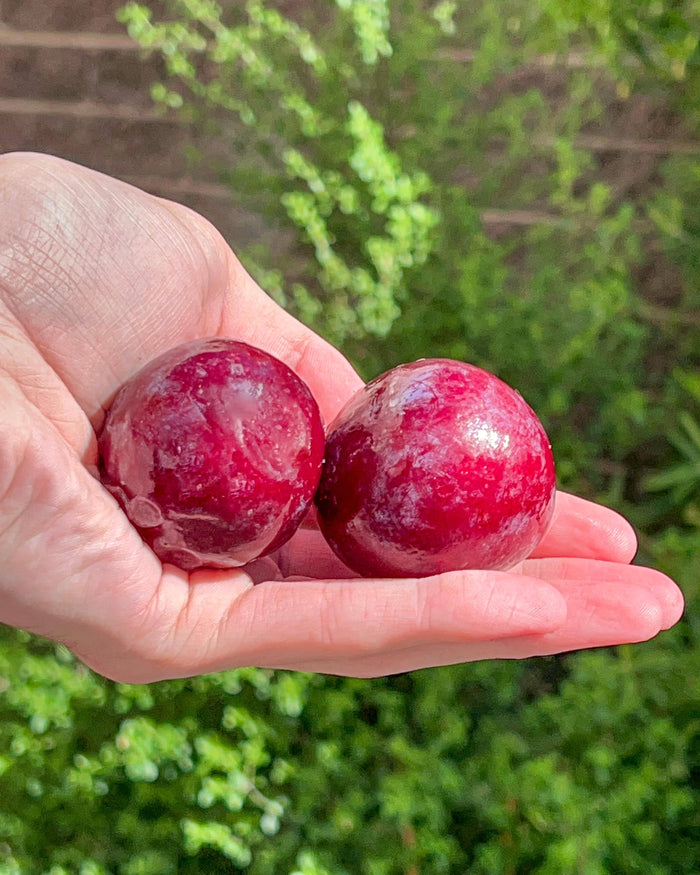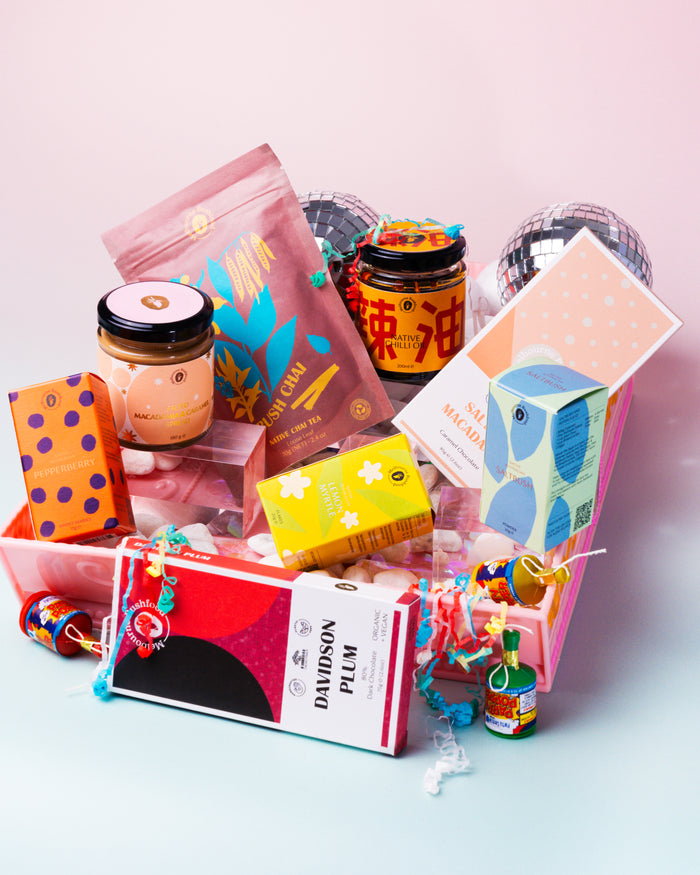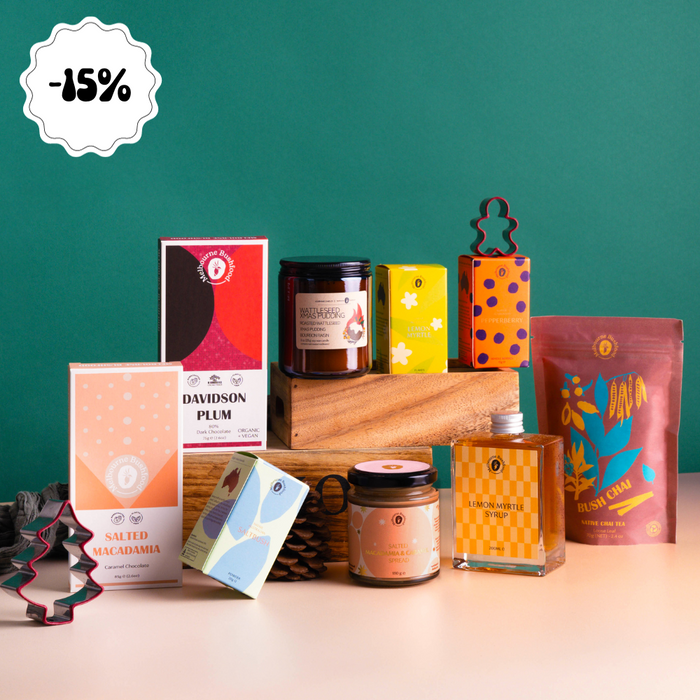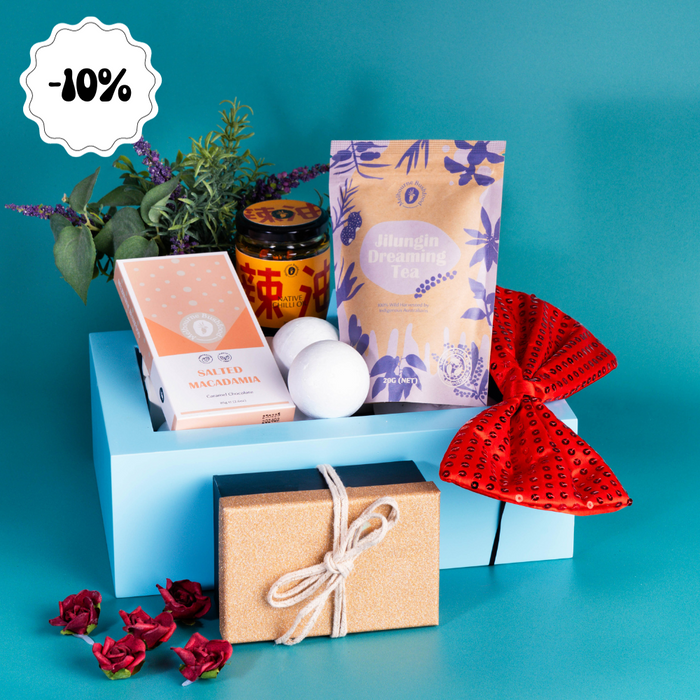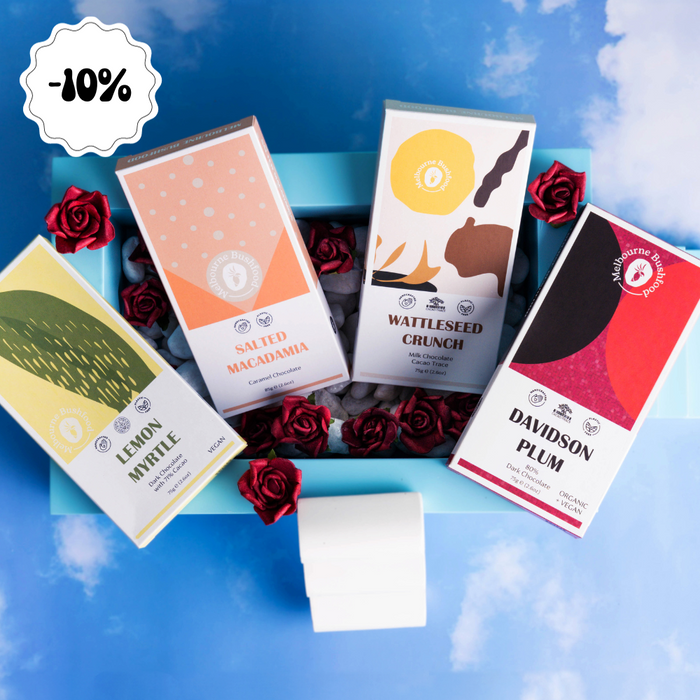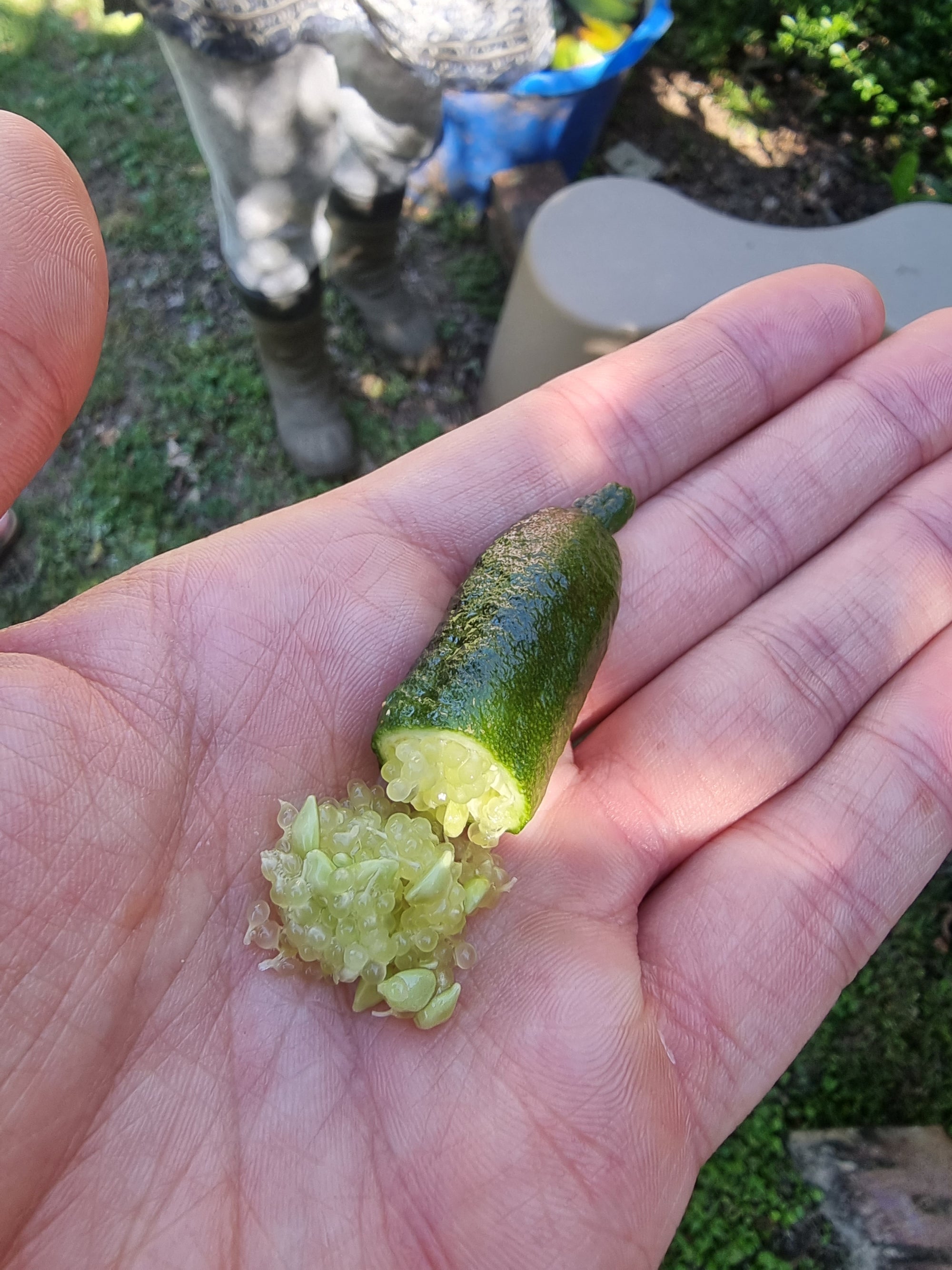

Finger Lime Varieties - A Guide on which Finger Lime to Choose
Introduction
Finger Limes are fast becoming on of Australia's crown jewels in the native food scene. Their luxurious caviar-pearl-like fruit is being scooped a top of oysters, added to fancy cocktails, heck, it's even being put into gin to make distinct flavours.
Native to the North-Eastern Coast of NSW, it's a unique native citrus that can act as a great privacy screen or hedge, with the thorns preventing anyone from creeping through. They require about half the water of lemon trees, and are tolerant of cooler conditions especially when grafted. They can crop heavily, and provide shade and shelter for all kinds of insects, birds and wild life. It's not uncommon to find small native finches nesting within.
The caviar pearls inside are the pearl of this fruit. However, the oil-rich skins can be dehydrated and used in teas, or distilled for all kinds of uses.
Grafted vs. Cutting vs. Seed Grown
Like most fruit trees, you can buy a Finger Lime as a grafted plant (that is where the finger lime is grafted onto another species of citrus), a cutting grown plant (where the mother plant is cut, and this cutting is planted directly into the soil with rooting hormones) or a seed grown plant (a seed + water = tree). We've popped the pros and cons of each below:
Grafted Plants
| Pros: - Fruits quickly (1-3 years) - More disease resistant - Resistant to cooler weather - Depending on the rootstock, it can be dwarfed |
Cons: - Expensive |
Suggested Rootstock for grafted plants:
Troyer - Good for cool climates
Flying Dragon - better for warm climates / dwarfing
Cutting Grown
| Pros: - Grows quickly - Can fruit within 2-5 years - Cheaper than grafted |
Cons: - Can struggle in cooler climates - Not as disease resistant |
Seed Grown
|
Pros: - Very Cheap, you'll find these plants at Bunnings for around $10 |
Cons: - Finger Limes don't grow true-to-seed, meaning you could end up with a plant that produces fruit with an intense amount of seed - Very slow to produce fruit - can be upwards of 8 years - Extremely thorny - Non-uniform growing habits - Low fruit quality - Might not produce much fruit |
Most Popular Varieties
Rainforest Pearl
- Going by many names, it's a variety that grows quickly, crops heavily, and produces stumpy, pink/red fruit, with light-pink internal pearls. It's the most commonly grown variety commercially due to it's heavy cropping nature, giving upwards of 2-3 harvests per year in ideal conditions. It's one of the mildest flavoured Finger Lime varieties.
Pink Ice
- Not icey at all, it's a long, finger shaped fruit with pink coloured pearls more on the flavour spectrum of grapefruit. It's one that's great for using in preserves, distiliations, ferments and more. It's a consistent fruiting variety with a good grop, with a beautiful taste and presentation.
Green Crystal
- The Pink and Blood Red colours are usually sought after for their beauty, but from a flavour perspective, the Green Crystal takes the spot. It's strong, acidity and limey-ness makes it a standout a top of oysters or dishes where the Finger Lime should shine. It's pearls are very light-green, so don't present well on a white a plate or pavlova.
Variety List
Finger Limes come in three main colour types: Green, Red, and Yellow. They may be pinkish, reddish with green tones, or green on the outside and red on the inside, but very generally speaking, the varieties are as follows:
Red/Pink Varieties - Mellow, more grapefruit flavour with beautiful pearls
Green Varieties - Intensely acidic, similar to limes, with unique eucalypty/mentholy flavour to them
Yellow - Mild acidity, similarish to lemons with a twist
Byron Sunrise - Deep red/pink fruit with blood red pearls. A favourite with flavour, although it doesn't fruit much and can be a slow grower. Good for pots though.
Rosebank Red - Red/Maroon Fruit with Pink to Light Green to Red pearls with a dense growing habit making it a good edible security hedge. Fruits late spring, early summer.
GEL - Green fruit with emerald pearls with an open growth habit fruiting in late summer.
Rough Green - Green fruit with light green pearls, upright growth habit with fruit coming in mid to late summer.
Tasty Green - Green fruit with dense green pearls, upright growth habit with fruit coming in early summer.
GPL - Black/Green fruit with light pink pearls with a weeping growth that fruits in late summer - the best as a feature plant.
BPL - Brown/Maroon/Green fruit with light pink pearls, open growth that fruits in late summer. It's a small backyard tree.
BXL - Deep purple fruit with deep red pearls. Upright growing habit with a mid-late summer harvest.
Pink Ice - Pink fruit with pink pearls that has a upright growth habit that has a mid-late summer harvest. A great backyard fruit tree.
GEM - Brown/Black fruit with emerald coloured pearls. Grows openly with a late summer harvest.
Rainforest Pearl - Red/Maroon Fruit with Pink to Light Green to Red pearls with a dense growing habit making it a good edible security hedge. Fruits late spring, early summer.
Green Crystal - Green fruit with green pearls. A favourite flavour-wise, with a dense growing habit. Late summer harvest.
Astonville - Midsized, light green fruit with light green pearls. A large growing tree that fruits in early Autumn.
Judy's Everbearing - Light brown/green fruit with pink/yellow pearls with an open canopy that fruits in late summer.
D'Emerald - Brown/Black fruit with emerald coloured pearls. Grows openly with a late summer harvest.
Rainforest Pearl - Red/Maroon Fruit with Pink to Light Green to Red pearls with a dense growing habit
Little Ruby - Small-growing finger lime with chubby green fruit with rosy red pearls when ripe. Late summer/early autumn harvest.
Green Sapphire - Light green fruit with light green pearls. A willowy shrub that fruits in early Autumn.
Gold Pearl - Green fruit with golden yellow pearls. Milder flavour of the green varieties, it's a mid-summer fruiter.
Jasper Jade - Deep and dark green variety with super limey green pearls. Autumn harvest with a upright habit.
Finger Limes can be tricky to decipher because of the complete variety of them, but it's a great plant to grow in any backyard or space. Whether it's in a pot, a suburban garden or on a country block, Finger Limes are a great citrus to have.

